Peking University, December 30, 2020: Registration is now open for the History and Theory of Art (HTA) Ph.D. program here at PKU School of Arts.
Dean’s Message
Peking University is the cradle of modern art education in China. One hundred years ago, President Cai Yuanpei founded art education institutes for painting and music research, employing as instructors Chen Shizeng and Xu Beihong in the former, and Xiao Youmei and Liu Tianhua in the latter. The scholars are the founders of modern Chinese art education and world-renowned masters.
Peking University’s tradition of art education was interrupted by some historical events. When it recovered, China’s art education environment changed dramatically. We now are the world’s largest provider of higher education in art. On the one hand, professional art education, represented by professional art colleges, was not affected by the reforms that occurred in Europe and the United States since the 1960s, and maintains strict technical training. On the other hand, art education has become an important part of quality education in comprehensive universities. All university students need to get credits from art lessons, leading to an unprecedented popularity for these courses. Due to deeper professional art education and wider quality-oriented art education, Peking University School of Art defines its own art education as “academic education”, aiming to break the barrier between professional and quality-oriented art education, combine the depth of the one and the width of the other.
We are looking forward to you joining our MFA program. Our goal is to turn you into an artist with a scholarly temperament. We are looking forward to students from other institutions to join our dual-degree program, and we will try our best to educate you as a scholar with artist temperament. For those who are interested in exploring art, we look forward to you joining our undergraduate and doctoral programs, and exploring together the third path of art education.
Chapter 1
Introduction
01
Peking University
Peking University is a comprehensive and national key university. The campus, known as "Yan Yuan"(the garden of Yan), is situated at Haidian District in the west of Beijing. Located near the Yuanmingyuan Garden and the Summer Palace, Peking University has a total area of 274 hectares.
Founded in 1898, Peking University was originally known as the Imperial University of Peking. It was the first national university covering comprehensive disciplines in China, and has been a leading institution of higher education in China since its establishment. It also served as the highest administration for education at the beginning of its founding.
In 1912, the University adopted its present name. At the end of the 20th century, the Chinese government put Peking University at the top of its agenda for promoting higher education, with the aim of building a world-class university in the 21st Century. After merging with Beijing Medical University in 2000, Peking University once again was strengthened in its disciplinary structure.
Peking University has continually played an essential pioneering role in the course of China's modernization. The University's traditional emphasis on patriotism, progress, democracy, and science, together with its educational standards of diligence, precision, factualism, and innovation, have been passed down from generation to generation.
The University has effectively combined research on important scientific subjects with the training of personnel with a high level of specialized knowledge and professional skill, as demanded by the country's socialist modernization. It strives not only for improvements in teaching and research work, but also for the promotion of interaction and mutual development among various disciplines.
Thus, Peking University has become a center for teaching and research as well as a new kind of university, embracing diverse branches of learning such as basic and applied sciences, social sciences and the humanities, medical sciences, management, and education. Its aim is to rank among the world's best universities in the near future.
02
School of Arts
Peking University has a long tradition of undergraduate education in Art Theory. Since the 1920s, when the president of Peking University Cai Yuanpei set up institutions of professional art education and research such as the "Painting Research Association", the "Calligraphy Research Association" and the "Music Research Association", Peking University has become the center of Chinese aesthetic and art education, as well as the cradle of modern Chinese academic art education.
In 1980s, Peking University established the Department of Art and the School of Art in 2006. For more than twenty years, the School of Art in Peking University has been insisting on a "Dao" (humanistic connotation) system to manage "Ji" (artistic technology). This combination of "Dao" and "Ji", theory and application, as well as the quality of academic and professional education, have been at the focus of the School of Art’s policy. Because of this, the School of Art has made remarkable achievements in discipline construction, art quality education, art theory research and teachers’ team construction. In 2012, The Art Theory department of Peking University School of Art ranked the first in the national First-level Discipline Assessment of the Ministry of Education. In 2017, it ranked first in the "Double first-class" discipline construction list, and ranked A+ in the Fourth discipline Assessment of the Ministry of Education. In 2019, it was selected to be part of the Ministry of Education’s list of National First-class undergraduate major construction.
The School of Art consists of four departments: art theory, film and television, fine arts and musicology. Additionally, the School of Art coordinates research institutions active in the fields of Cultural Industry, the aesthetic and art of Cao Xueqin, film, television and drama, calligraphy, Kunqu heritage, folk music and musical dramas. Besides, there are also two institutions: one is the National Base for International Cultural Exchange and Research, the other is the Literary and Art Criticism of China Federation of Literary and Art Circles and Peking University.
At present, the School employs 26 teachers, including 14 professors, 6 associate professors, 6 assistant professors and 14 post-doctors.
Our school now has a total of 541 students, consisting of 187 undergraduates (including 56 international, Hong Kong, Macao and Taiwan students), and 354 postgraduates (including 24 international, Hong Kong, Macao and Taiwan students).
The major setup of School of Art is as follows:
• Undergraduate programs include History of Art, Literature of Film and Drama, and Cultural Industry Management. Besides, we allow students to pursue Art Theory as second Bachelor’s degree and minor art degree.
• Master of Fine Arts(MFA) program include Film, Radio and Television, Music and Art.
• The doctoral program of art is a first-level discipline doctoral program in art theory, and is divided into four research directions: Art Theory, Art Criticism, Art History, Art Management and Cultural Industry.
• Besides, the School of Art also has a post-doctoral research station with the first-level discipline of Art Theory.
03
History and Theory of Art Ph.D. program
The History and Theory of Art (HTA) Ph.D. program is an English program established by the School of Art in Peking University in the fall of 2020. This project focuses on advanced topics in Art Theory, and encourages participants to pursue research projects in the following four areas of specialization:
• Art Theory:
Art theory focuses on the philosophy of art. By studying courses such as Introduction to Analytic Philosophy of Art, Special topics in aesthetics, and Studies of art theory, participants will develop a deep understanding on the development of art theory. This research direction focuses on the analogies and differences between different art forms. It examines some attempts at constructing a complete system of the arts,. This research field focuses on an analysis of art and artistic practices that employs theoretical resources, as opposed to historical or empirical ones.
• Art History:
Art history focuses on the artworks created under their historical contexts. By studying Special topics in Chinese art history, Methodology of art history, and Special topics in contemporary culture and art, participants will systematically master the basic methodology of art historical research. Moreover, formalism, iconography, and a variety of interdisciplinary methods will be introduced to carry out research on painting, sculpture, architecture, art and crafts, and other visual materials. Based on the construction of the history of human artistic activities, students are provided a new theoretical perspective of human civilization and develop better understanding on the contemporary art.
• Art Criticism:
Art criticism studies the development of art, especially in the area of film studies, by studying Cross-media narrative, Special topics in history of film, Special topics in history of theater. Students will focus on the aesthetic features, development, creation, and culture of films. Also, the social and cultural functions of films will be discussed by combining the integrated development and the innovative representation of films employing the new technology.
• Art Management:
Art Management focuses on exploring the cultural and economic value of art from the perspective of industrial development. By studying Research on Arts Management's Forefront Problems, Studies in the cultural economy and Management of Creativity, Intensive Reading of cultural Industries, and other courses, students will grasp the interdisciplinary structure of art management and expand the University’s influence in art education.
This program makes full use of the high-quality teaching resources of Peking University, the School of Art in Peking University, and other relevant research institutions. It aims to enable students to fully grasp the theory and practice of art research development. The program will also build an international academic research network for students to share knowledge with peers and senior academics. In this four-year full-time program, English is the language of tuition. Students submit their doctoral thesis after the completion of the required credits. After the defense of their thesis, students finally obtain their Ph.D. degree in Art Theory from Peking University.
04
Our Faculty
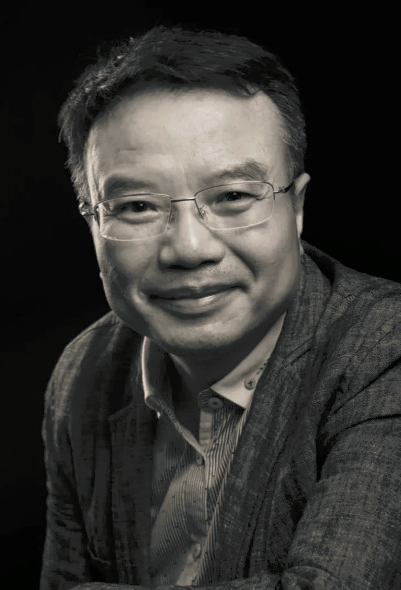
Peng Feng
A Peking University Ph.D. graduate, Peng Feng is the dean and professor of Peking University School of Arts. He has been member of the executive committee of the International Association for Aesthetics since 2009. His research interests include history of Chinese aesthetics, contemporary aesthetics, and art criticism. He has published 15 academic books, including The System of Contemporary Art Theory (Beijing: Peking University Press, 2016), Return of Presence: New Tendency in Philosophy and Contemporary Art (Beijing: China Federation of Literary and Art Circles Press, 2016), Aesthetic Venturing in the Arts (Beijing: Beijing Normal University Press, 2015), Modern Chinese Aesthetics (Nanjing: Fenghuang Press, 2014), Pervasion: China Pavilion at the 54th International Art Exhibition of La Biennale di Venezia (Beijing: People’s Art Press, 2012), An Introduction to Aesthetics (Shanghai: Fudan University, 2011), Return of Beauty: 11 Issues of Contemporary Aesthetics (Beijing: Peking University Press, 2009) and others; 7 translations, such as Nelson Goodman’s Languages of Art, Peter Kivy’s (ed.) The Blackwell Guide to Aesthetics, and Richard Shusterman’s Pragmatist Aesthetics, and over 200 papers in aesthetics, theory of contemporary art, and history of Chinese philosophy. His English papers were published in Philosophy East and West, Journal of Aesthetic Education, Filozofski venstnik, Revista di Estetica, The Sungkyun Journal of East Asian Studies, Journal of Comparative Literature and Aesthetics, The Journal of Somaesthetics, Journal of the Faculty of Letters, The University of Tokyo, Aesthetics, Yearbook of International Aesthetics, Roger T. Ames (ed.), Zhuangzi and the Happy Fish (Honolulu: University of Hawai’i Press, 2015), Mary Wiseman (eds.), Subversive Strategies in Chinese avant-garde Art (Boston: Brill, 2010), Ken-ichi Sasaki (ed)., Asian Aesthetics (Kyoto: Kyoto University Press, 2010), as well as in other venues. He is also a playwright, freelance art critic, and curator of international exhibitions. He has curated over 200 art exhibitions, including the China Pavilion at the 54th international art exhibition of Venice Biennale 2011, the 1st International Sculpture Exhibition of Datong Biennale 2011, the 1st International Art Exhibition of China Xinjiang Biennale 2014, the 2018 Fuzhou International Lacquer Art Biennial, and the 2019 Pingyao Sculpture Project. He wrote over 10 plays, including the musicals The Red Lantern and The Tenor in a Sheepskin Jacket, the experimental dramas Prophecy and Interpreting, and the screenplays Overnight Success and Art Is Dead, among others.
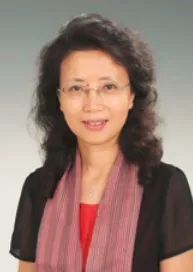
Lin Yi
Professor Lin Yi focuses her research interests in Arts Management, Intercultural Communication of Arts and Comparative Art Studies. She is director of National Centre for Research into Intercultural Communication of Arts, executive president of China Arts Administration Education Association, chairperson and specialist of the International Advisory Board for Promotion of Chinese Arts and Culture, Confucius Institute Headquarters, inspector and board member of the Asia Theatre Education Centre, editorial board member of International Journal of Higher Education Review, editorial board member of International Journal of Arts Management.
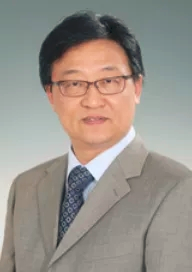
Ding Ning
Professor Ding Ning has taught more than ten years at the China National Academy of Fine Art before moving to Peking University in 2000. In 1993, he won the post-doctoral fellowship attached to the University of Essex under the auspice of the British Council. He was also offered various major grants from Harvard University, the Onassis Foundation, ZKM, the Getty Foundation, the Terra Foundation, and others. He has lectured worldwide.
His major book publications are: Dimensions of Reception (1990), Psychology of Visual Art (1994), Dimensions of Duration: Toward a Philosophy of Art History (1997), Depth of Art (1999), Western Art History (2015), Spectrum of Images: Toward a Cultural Dimension of Visual Arts (2016), Looking Far and Clear: Approaching the most Beautiful Art (2016), among others. His research has focused on art history and theory, comparative art history and psychology of art. He also actively involved with contemporary art criticism and with the Beijing International Art Biennale.
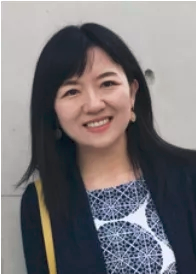
Liu Chen
Liu Chen is the vice dean and an assistant professor of Peking University School of Arts. After graduating from the Department of Philosophy at PKU, she got her M.A. and Ph.D. degrees in art history from Arizona State University in the US. She is specialized in Chinese and Japanese art, and her research interests include narrative painting, portrait painting, and the relationship between image and text. She has published more than 10 articles both in Chinese and English, and has been teaching courses in both languages.
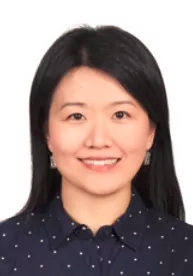
Jia Yan
Dr. Jia Yan is an assistant professor in the School of Arts, and a research fellow of the Institute for the Ancient Civilizations at Peking University. She works on the art of the ancient Near East, with an emphasis on the Neo-Assyrian period. Jia received her Ph.D. in the Department of History of Art and Architecture at Harvard University. Prior to Harvard, Jia received double Bachelor degrees in History and Art Studies, and an MA in Egyptology, all from Peking University. She also studied at Cairo University for one year, focusing on Egyptian archaeology. During the decade (2005-15) of her doctorial training at Harvard, she was a recipient of the prestigious five-year Harvard-Yenching scholarship. She also took the Agnes Morgan curatorial internship at the Harvard Art Museums, working specifically on cylinder seals. In the past years of teaching at PKU, Jia received Huang Tingfang-Xin He Awards for Distinguished Young Scholars (2016), and support from the Chinese National Social Science Fund (2016). Jia was also a receiver of the UCL visiting fellowship in 2018. Currently Jia is revising her manuscript of a book on the “Balawat Gates” based on her doctoral research, and working on a book in Chinese focusing on the temporality of ancient Mesopotamian art.
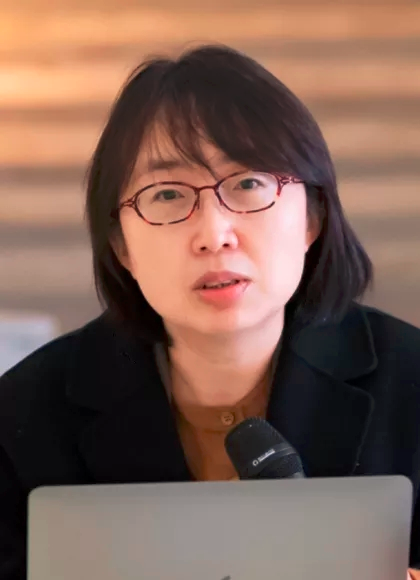
Tang Hongfeng
Tang Hongfeng is an assistant professor in the School of Arts at Peking University whose research interest focuses on history and theory of art and visual culture. She was previously an associate professor at Beijing Normal University. She was a visiting scholar at Harvard-Yenching Institute, Harvard University in the year of 2011-2012, at Centre for Comparative Literature Studies, University of Toronto in the year of 2007-2008. She has published two books, dozens of papers, and received three project grants.
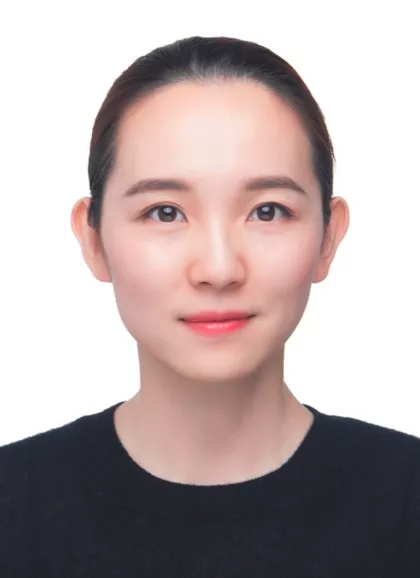
Dong Lihui
Dong Lihui is currently assistant professor in the School of Arts at Peking University, and holds Ph.D. degrees in Art History from Tsinghua University and the University of Pittsburgh. Her present research project centers upon the art exchange between the East and West, and visual culture studies. Her research interests relate to Qing Dynasty court portraiture, Christian art in China, and the history and theory of early photography. Selected publications include Game Playing and Cultural Misreading: How the Empress Dowager Cixi’s Portraits Representing the National Image of China in the Early 20th Century, From the Black Art, Western Technique to Modern Art: The Historical Context of Chinese Modern Photography in the 1920s, Influence and Diffusion of Illustrated Books Imported by Western Missionaries in the 16th and 17th Century China, The Development, Visual Translation and Influences of the Images of Madonna in China, and Chinese Translation of Western Images: Christian Art in China in the 16th and 17th century.
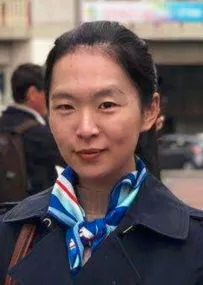
Chen Xuan
Chen Xuan is assistant professor in art history in PKU School of Arts. She previously worked as a curator in the Palace Museum in Beijing. She obtained DPhil in Chinese Art and Archaeology at the University of Oxford in 2014. Her main research interest includes funerary art of the Han Dynasty, material culture of the Qing imperial court and material cultural communication between China and the West. She is currently in charge of a national art research project on foreign influences on Han Dynasty decoration. Her recent publication in English is Eastern Han Tombs in Sichuan (Oxford: Archaeopress, 2015).
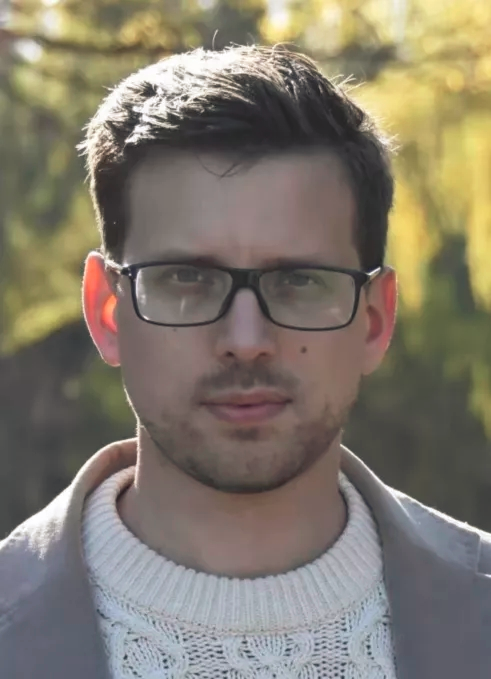
Matteo Ravasio
Matteo Ravasio received his BA and MA in Philosophy from the University of Milan, Italy. In 2018, he completed a Ph.D. in Philosophy at the University of Auckland, New Zealand, where he worked under the supervision of Professor Stephen Davies. His Ph.D. research deals with the problem of music’s emotional expression. In his dissertation, Matteo analyzed contemporary theories of musical expressiveness, and pointed to some so far overlooked problems for some prominent views.
Matteo is currently a Boya Postdoctoral Fellow at Peking University, where he is supervised by Professor Peng Feng. During his time at PKU, Matteo has carried out both research and teaching duties, publishing several papers and teaching three courses.
Chapter 2
Program Information
01
Objectives
Students should master solid and broad basic theories, research methods and systematic professional knowledge in depth, as well as some knowledge of related subjects; be able to independently engage in creative research, senior teaching or other practical work; use foreign languages to write thesis and exchanging academics internationally. After graduation, our Ph.D. holders can teach, research and manage in universities, art research institutes, cultural industry institutions and cultural administrative departments.
Students will develop a solid and broad knowledge base that includes the most relevant theories and research methods, as well as some knowledge of relevant related subjects. Students will be able to engage independently in original research and carry out teaching and other academic duties. They will be able to use English to write their thesis and to engage in academic exchanges with international scholars. After graduation, they will be able to teach, research, or take up administrative and managerial positions at universities, art research institutes, cultural industry institutes, and cultural administrative departments.
02
Years of Study
The standard duration of the program is 4 years.
03
Credit Requirements
Students should get no less than 28 credits, including 22 for compulsory courses and 6 for elective courses.
04
Directions of Research
International students in our school should carry out research on art history and theory. This research direction attaches great importance to basic theory, exploring contemporary issues, and seeking an interdisciplinary path with an international outlook.
05
Curriculum
5.1 Compulsory Courses
Compulsory courses (16 credits) include public basic courses and professional compulsory courses, covering art theory, Eastern and Western cultural theory, professional basic knowledge and skills.
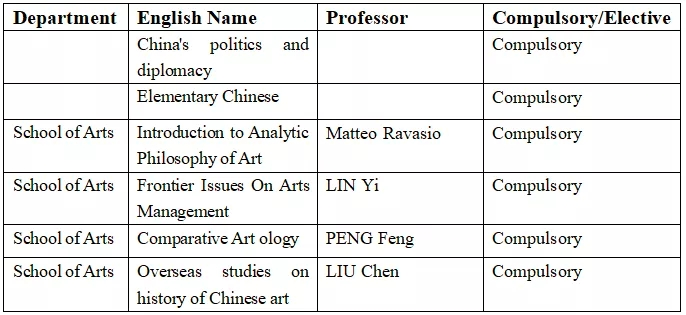
5.2 Elective Courses
Elective courses (no less than 6 credits) are offered by our school and other schools or departments. Courses in our school cover different fields and directions, through which students can have a deeper understanding of their major so as to lay the foundation of their future development. Other elective courses are professional or general courses, offered by other departments such as philosophy, sociology, Chinese, psychology, economy, law, etc. Students can get interdisciplinary basic theory, do researches on up-to-date affairs and learn professional knowledge in different professional fields.

(For reference only. The specific courses are subject to the variation each semester)
06
Requirements for Comprehensive Examination
1. Students should undergo a comprehensive examination at the end of the third semester after enrollment. Those who pass the examination can continue to study for doctoral degree; those who fail will be removed from the program. Students who fail to take the examination in time will be treated as unqualified and will be removed from the program. The grade will be listed in the report card, but not included in the credits. Students can download the comprehensive examination form in portal.
2. Whether the students have sufficient ability and qualification to study further is determined by the following procedure: when the professor confirms research materials, a group of over 5 professors will be organized so that students can take the examination on the relevant issues (including questions related to the graduation thesis).
3. Doctoral students who plan to go abroad for exchange must complete the comprehensive examination.
07
Dissertation and Academic Innovation
1. Thesis Proposal: on the basis of extensive investigation of, and familiarity with, the latest research trends and scholarly works, students should propose a topic and report it to no less than 5 peer experts, taking their advice; the proposal of 4-year doctoral students should be completed before the end of the fourth semester after enrollment; dissertations that have not completed the proposal stage are not allowed to apply for defense. The relevant materials should be submitted to the graduate school together with the application for the defense.
2. Pre-Defense: the pre-defense should be within 3-5 months before the formal application of doctoral defense. Students should report the progress and achievements to professors, members of the doctoral students' steering group and relevant teachers, taking their advice. The doctoral students' steering group (or expert group, generally no less than 5 people) should make suggestions to the creativity, academic level and whether they can apply for the defense. Students whose thesis do not reach the level are not allowed to defend the thesis; students whose thesis do not a have the review opinions are not allowed to apply for the defense. The review opinions of the expert group during pre-defense will be submitted to the graduate school together with the application for the defense.
3. Basic Requirements: it should be a creative achievement of art study, which is of great significance to the development of the discipline or the construction of national culture; it should show that the author has solidly mastered basic theories, research methods and specialized knowledge, and is able to engage in scientific research independently. Students should complete the thesis independently under the guidance of their supervisor.
4. Writing an academic thesis is an important part of doctoral training, while academic publishing is an important form of innovation. We encourage doctoral students to publish academic innovation. For detailed requirements, please refer to “Details of the Implementation of Academic Innovation of Peking University School of Arts”.
Chapter 3
Application Instructions
01
Admission Requirements
1) Applicants must be citizens of countries other than China, have valid passports, be in good health, and be of good standing. While in China, applicants will be expected to abide by the laws and regulations of the Chinese government and by the rules of the university.
2) Applicants must hold a master’s degree.
3) Applicants must demonstrate good academic performance and must meet the English Proficiency Requirements set by the program.
4) Applicants must be in good health and meet the prescribed physical examination standards.
02
Application Timeline
Please refer to
http://www.isd.pku.edu.cn/HOME.htm
for details.
03
Steps of Application
Please refer to
http://www.isd.pku.edu.cn/HOME.htm
for details.
04
Submission of Application Materials
1) Online Application Form. Please use the Online Application System for International Students of Peking University (http://www.studyatpku.com) and login to start your application. When completed, print out the Online Application Form and attach a recent photo of yourself (the photo must have been recently taken and bear an identifiable resemblance to the applicant).
2) Original or notarized copy of your highest Certificate of Degree (in either Chinese or English).
3) Original or notarized copy of your Official Transcripts (in either Chinese or English).
4) Statement of Purpose (including your research interests and plans).No less than 3000 words. The format is available at http://www.isd.pku.edu.cn/HOME.htm
5) 2 Letters of Reference. Your letter writers must be professors. The format is available at http://www.isd.pku.edu.cn/HOME.htm
6) English Proficiency Requirements.
i. For Native English speakers and applicants who completed college education in a country where the only language of instruction was English, no English Proficiency is required.
ii. For Non-Native English speakers, English Proficiency must be demonstrated by submitting official test scores of either TOEFL or IELTS. Minimum Scores: TOEFL: 100. IELTS (Academic Test): 7.0.
7) A Copy of your Master’s thesis.
8) Copy of your main passport page (should be clearly legible). Please also make sure your passport is valid.
9) Your published research papers (we only require the Abstract and Table of Contents parts) and other academic output of yours (if available). NOTE: ALL the documents must be submitted with duplicates (one original and one copy). Please submit all required documents in person to the International Student Office by the deadlines. If you choose to mail the documents, place all the documents in one sealed envelope, indicating “Graduate Application Materials” on the envelope (Application materials will not be returned).
05
Application Fees
Please refer to
http://www.isd.pku.edu.cn/HOME.htm
for details.
06
Departmental Preliminary Review
The International Student Office will assess the documents provided by applicants to assure that they meet the standards set by the program. Then, the documents of qualified applicants will be transferred to the Academic Affairs Office of the School of Arts by March 1, 2021.
The admission decisions are made by the Admissions Committee of the School of Arts. All aspects of each application are carefully and thoughtfully reviewed by the committee, using a combination of criteria such as: the applicant’s undergraduate and graduate schools, major, academic level, character, and developmental potential in the applied professional field. After careful consideration, the committee identifies applicants who will be included in the final review.
07
Departmental Final Review
In March/April of each year, the School of Arts will conduct a final review. During the final review, the Admissions Committee of the School of Arts conducts a comprehensive assessment of the professional level and language ability of the applicants. Applicants will give an oral presentation to the committee members regarding their academic research experiences, their understanding of and opinions on the applied program, and their plans regarding the upcoming studies and research.
Based on the results of both the preliminary and the final reviews, the Admissions Committee identifies and recommends top applicants and then submits the preliminary decision to the Graduate School Admissions Office for further review.
08
Admission Decisions
1) The final admission decision will be announced by the International Student Office.
2) The International Student Office will begin sending off documents such as admission letters and visa application forms to admitted applicants in late June 2021.
09
Academic Calendar
Admitted students are required to register for courses at the beginning of September 2021. The registration dates and deadlines will be indicated on the admission letter. Accepted students must come to Peking University to complete registration in strict accordance with the dates specified in the admission letter.
10
Tuition and Scholarship
The tuition fee of the Ph.D. program will be RMB 50,000 Yuan per year, and RMB 200,000 Yuan in total for four years. Admitted student can apply for scholarships through the following ways.
1) Chinese Government Scholarship. The scholarship application should be directed to the Chinese Embassy or Consulate in the applicant’s home country. The application time is from now to April 2021 (it may vary for different countries). Please find out the application deadline for your country in advance. Part of the tuition fees and some other fees, such as dormitory fees, allowance and insurance can be covered if the application is successful.
2) Beijing Government Scholarship for International Students. (Please contact the International Students Division at Peking University for details of this scholarship.)
3) Peking University Scholarship for International Students. (Please contact the International Students Division at Peking University for details of this scholarship.)
More details can be found at
http://www.isd.pku.edu.cn./HOME.htm
11
Awarding of the Degree
To be awarded your degree, you are required to complete all the graduate credit coursework indicated in your “Training Plan” with qualifying grades, complete your dissertation, and pass the oral defense of your dissertation. After the review and approval of the Degree Assessment Committee of Peking University, the corresponding degree will be awarded.